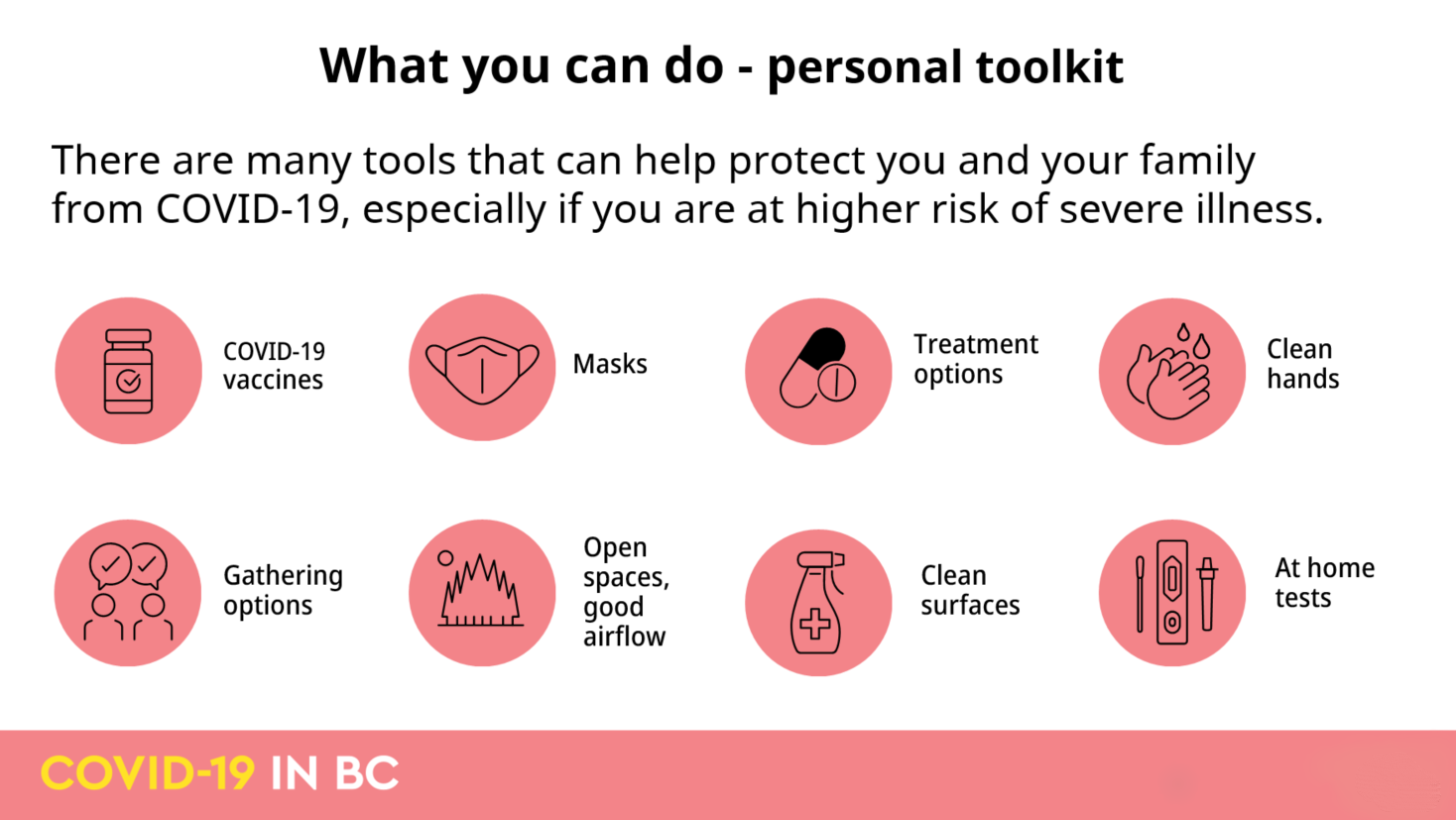Posted on: September 29, 2022

Health Minister Adrian Dix and Provincial Health Officer Dr. Bonnie Henry held a provincial briefing this afternoon to provide an update on the upcoming respiratory season – including modeling of what is expected.
Dr. Henry shared that she believes we are emerging from the pandemic, but a lot of uncertainty remains. “COVID-19 is going to be with us for the long term, and we need to put that in context with the other respiratory viruses we are likely to see again this fall."
Modeling shows BC could see surge in hospitalizations in November/December. If BC follows the pattern of influenza seen in the southern hemisphere – we could also see an influenza surge around the same time.
“We are going to see influenza, I have no doubt," Dr. Henry said. “Worst case, we might start seeing a surge at the same time that our immunity from our last booster doses of COVID has dropped and there is a surge of COVID as well."
Dr. Henry encouraged everyone to get their booster when they are invited, particularly those at highest risk of severe illness.
“In this era of high community immunity and new COVID treatments, for the majority of people who are fully vaccinated and boosted, COVID no longer poses that same risk of serious outcomes as it did at the onset of this pandemic. That means we can go back to safely doing a lot of the activities that we do, and put COVID in the context of what we deal with every year in respiratory infections."
The provincial flu shot campaign will start next week, and flu vaccinations will be available in pharmacies and clinics Oct 11.
Surge Planning
Health Minister Adrian Dix provided an update on surge planning in the BC Health system, including plans for additional potential hospitalizations from COVID and Influenza.
COVID-19 and Influenza related surges are expected, but it is hard to predict just how many cases there will be. “We have to prepare for all scenarios, including the most difficult," said Dix. “That means that on top of the 350 COVID patients we have right now, we might get up to 700 more, and that is a significant number of patients. Influenza projections suggest a peak of up to 1,200 additional patients may require hospitalization at a given time."
Dix said we are planning bed management to support bed availability based on moderate to high projections, planning 1,500 more beds (if needed) from late fall through early spring, ensuring we have room for those potential needs.
Bed management strategies are being refined to manage hospital capacity, including planning to open additional hospital bed capacity. Of the current patients in hospital, approximately 1,300 could be cared for in the community, and 500 are awaiting placement in long term care. Patients are being identified for potential transfer to community to create space if needed.
The health minister also shared that a new provincial operational Task Group is focusing on improving emergency department efficiency, hospital access and flow. This includes 7-day a week active bed management teams to optimize in-patient bed utilization, and enhanced air ambulance service to expedite transfers when needed. Island Health is represented on the Task Group by Marko Peljhan, Interim VP of Clinical Operations for Cowichan Valley and South Island, and Dr. Tracey Stephenson.
“Worst case scenario planning is underway, where as a last resort and when needed, as we've seen before, service reductions including postponing non-urgent scheduled surgeries could be required. We obviously want to avoid that," Dix said, wrapping up by appealing to everyone to get vaccinated as the best way to protect the health system.
“This is why I want to emphasize again that we all have some power and control – we can get immunized against influenza, immunized with the bivalent vaccine against COVID-19," Dix said. “For your personal health, for your family's health, for your community, and for the people in health care who have worked their guts out for the past two and a half years and continue to do so, providing more care than ever before in the face of growing demand."
View the modeling presentation from the provincial briefing (Surge planning starts on slide 26)